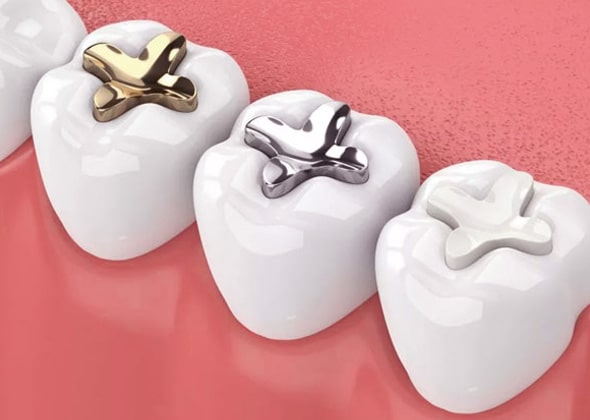What Are Dental Fillings?
Cavities caused by oral acidity are repaired with dental fillings. Potholes and unevenness in the road are filled using materials like cement or asphalt. Additionally, they can be relied upon to restore teeth that have been damaged by mistreatment or abuse, such as consuming cracker nuts, bruxism, tooth grinding, or nail biting. In the end, your dentist will determine which kind of filling is most appropriate for your particular circumstance or tooth problem. If fillings are insufficient to keep your tooth, he may additionally recommend placing crowns, bridges, or veneers.

Different Types of Fillings
The holes left behind by cavities can be filled using several materials. Gold, silver, porcelain, amalgam, plastics, glass ionomers, and composite resins are a few of them. The type of filling material that is ideal for each circumstance is frequently determined by the location of the damaged tooth, the extent of the decay, the patient's insurance coverage, the cost of the dental fillings, and the oral health professional's recommendation.
Why Are Dental Fillings Necessary?
Everyone is aware that dentists use dental fillings to treat cavities. This is crucial because it closes the gap and safeguards the tooth. Otherwise, microorganisms and tiny food particles might enter. This might cause decay or, worse still, an infection. There is a considerable possibility that the patient may require a root canal once the infection has taken hold.
How Do You Decide Whether You Need Dental Fillings?
If one isn't effectively caring for their teeth, one may experience a variety of dental issues. A tooth cavity is one such issue. Lack of dental hygiene, eating sugary meals, and frequent snacking can all lead to cavities. In this situation, you could need a filling.
What Happens During Dental Fillings?
The decay inside the cavity is removed by the dentist during the dental filling treatment. A drill is used for this. Having the decay removed protects the tooth from additional damage. The dentist next inserts a filling into the decaying area to replace the rotted portion of the tooth.
When You Should Get a Filling Replacement?
The majority of people will require at least one tooth filling over their lifetime. So don't be alarmed if your dentist suggests that you get a filling during your routine dental checkup. Tooth sensitivity, a chipped or cracked tooth, black stains, and intense pain are all signs that you may need a filling. A dentist removes the decayed portion and plugs the space to prevent future harm or the spread of the cavity to neighboring teeth. The type of fillings and the nature of the injury determine the treatment. Gold fillings, amalgam fillings, composite fillings, and porcelain fillings are some of the most often utilized materials for fillings.
We'll have you in and out of the chair and back to your regular activity in a single visit.
